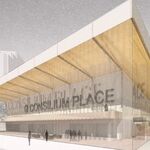AnarchoSocialist
Active Member
I only ever lived in Barrhaven, and the only thing i remember from then is how far it was from everything when I was a passenger in my mom's van. This was before even the transitway was extended there, so I do have to defer to your experience AS.
I would only suggest connecting Union Station back up if the track were run at grade for most of the route. Scenic driveways are not what make a city nice to live in.
And MisterF, I'm with you too on the bypass idea. Any trains destined for Ottawa would use the existing station and trackage, while high speed trackage could be built through the greenbelt. I only proposed the airport station as an opportunity for a stop on that bypass route for codeshared flights. Ottawa Station would still be the main station for the region. A new bridge would need to be built over the Rideau River regardless since the Canadian Northern Ontario Railway Bridge is only single track (or is there room for it to be twinned?)
Im not sure if that bridge could be twinned or not. Im not sure if that would much help anyways, depending on what speeds the bridge could allow even with upgrades (right now trains slow down to about 60 km/h when they cross it).
One of the problems, or unique aspects, with Ottawa is that it never really grew around rail movements. Its never been that industrial and doesnt have all the convenient inner city lines that Toronto and Montreal do. Aside from spending several billion dollars to bring a rail line through or near downtown (which doesnt make sense right now at least) I think the stations they have now are the best choices.
A bypass for Toronto - Montreal trains might not be a bad idea. Putting it through the greenbelt is not going to happen and I dont even know if connecting the Ottawa airport to the HSR network is all that important (its not really along a natural path and its not a Pearson or even Trudeau). Just a general look at land use and topographical maps suggest a bypass about 25km south of the city could work. It would still be about 40 km in length, but still at least 100 km shorter than a lakeshore route.
For me, at least, what would make this routing truely work would be the development of a regional rail network in the Ottawa/Southwestern Ontario region. I cant elaborate too much only because Im not sure right now how that could best work. But, since regional rail is an idea Ottawa and surrounding communities are exploring maybe it could be integrated into and HSR plan to make it a little bit cheaper and marketable but yet more comprehensive in terms of service.




